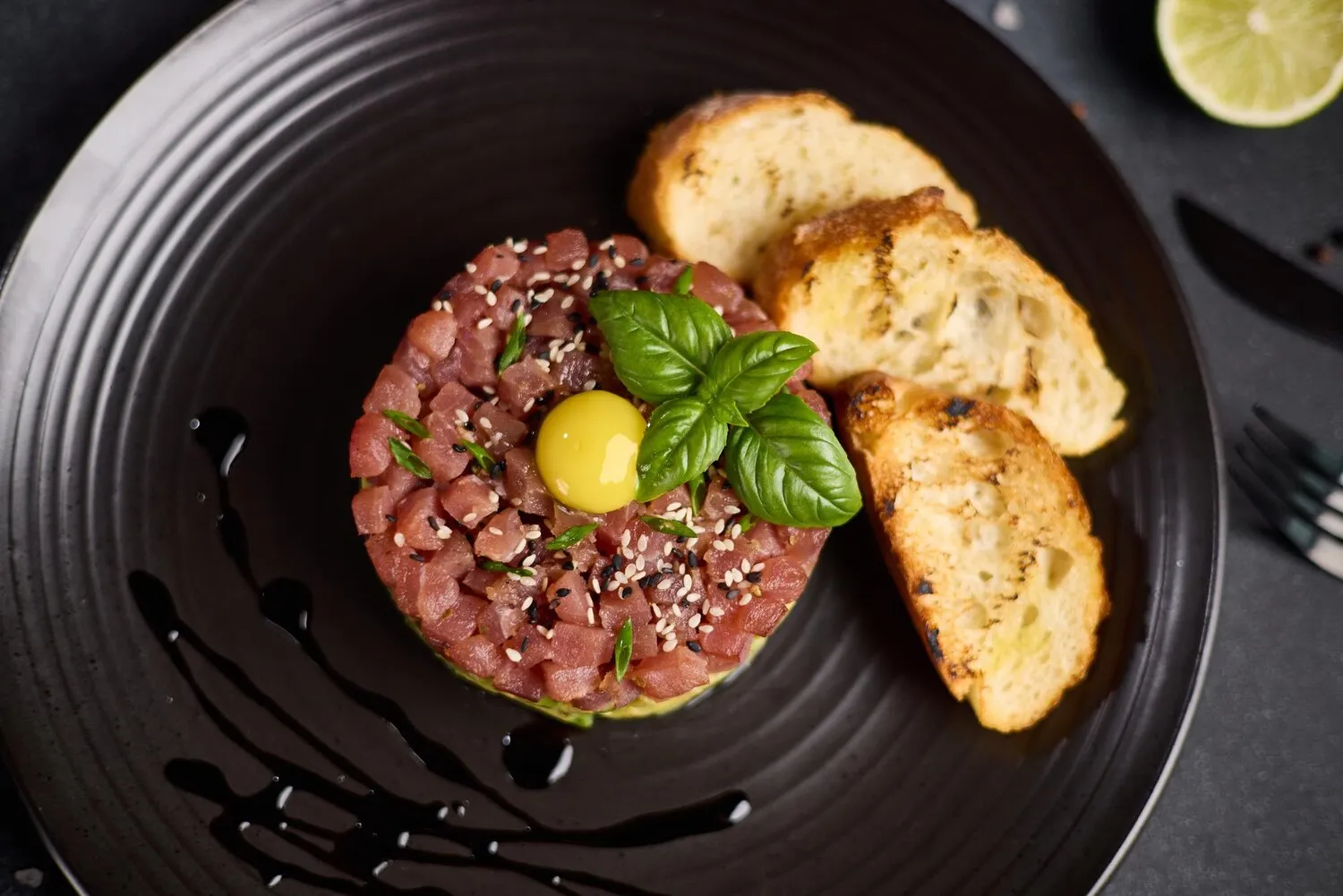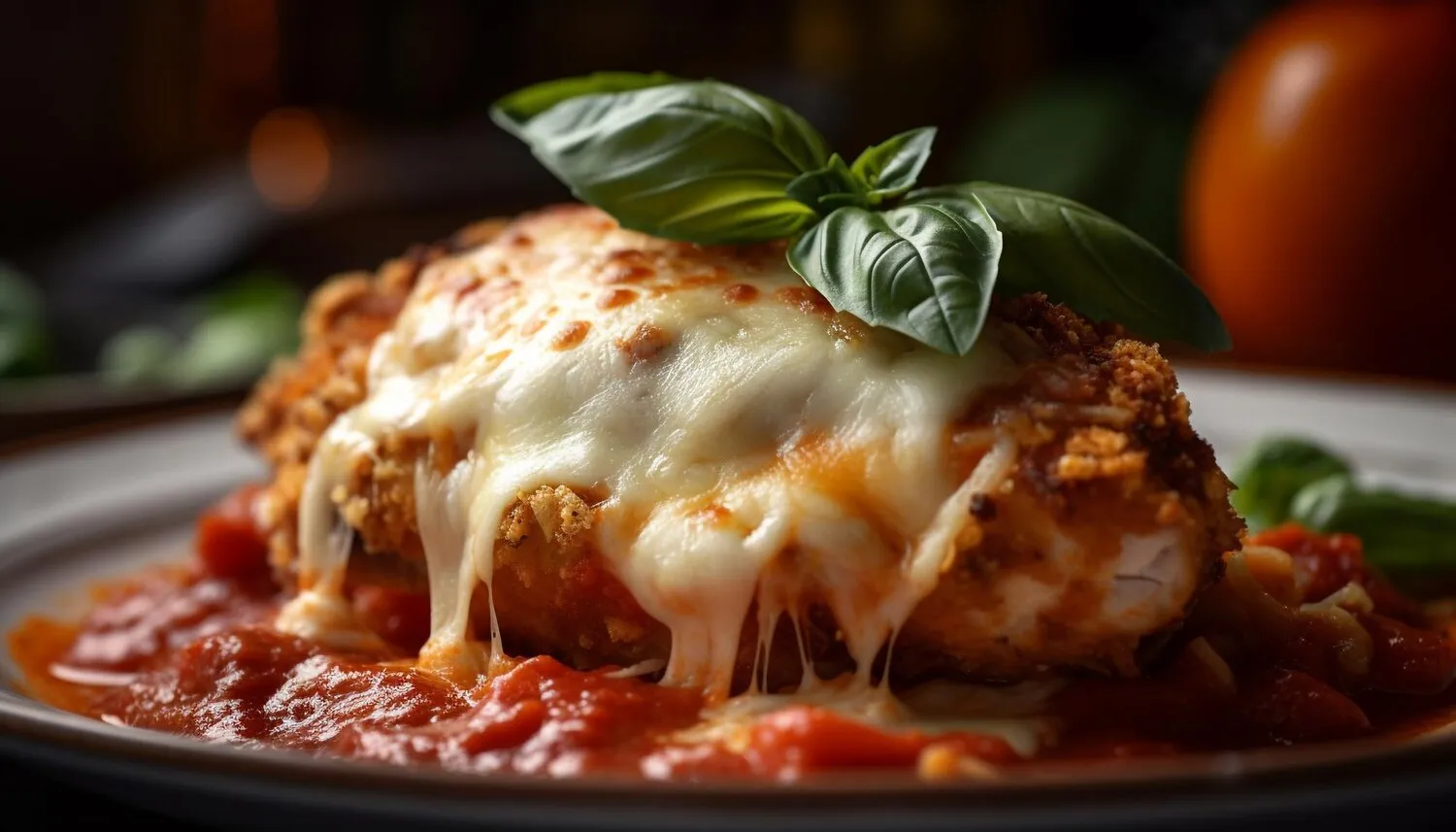
Steak Tartare
Raw minced beef steak, seasoned with onions, capers, pepper, Worcestershire sauce, and other seasonings, often served with a raw egg yolk.
Nutrition Facts
* The % Daily Value (DV) tells you how much a nutrient in a serving of food contributes to a daily diet. 2,000 calories a day is used for general nutrition advice.
The exact origins of Steak Tartare are debated. Some attribute it to the Tartar horsemen of Central Asia, who supposedly tenderized meat under their saddles. However, the modern version is more likely a 20th-century creation, drawing inspiration from dishes like Tartar steak, which involved cooked meat. The name references the Tartars, reflecting a romanticized, albeit inaccurate, image of raw meat consumption.
Steak Tartare is often seen as a sophisticated and adventurous dish, enjoyed in fine dining establishments and appreciated by those with a taste for raw cuisine. Its presentation is crucial, reflecting the chef's skill and attention to detail.
Presentation and Perception
The dish is typically presented artfully, often molded or shaped, with the raw egg yolk carefully placed on top. This contributes to the overall dining experience and reinforces the idea of it being a high-end delicacy.
Safety and Quality
Due to the nature of the ingredients, the safety of Steak Tartare relies heavily on the quality and freshness of the beef. Reputable restaurants ensure the beef is sourced from trusted suppliers and handled with strict hygiene standards to minimize the risk of contamination.
Variations and Regional Interpretations
While the classic recipe remains popular, variations exist. Some include other ingredients like cornichons, anchovies, or hot sauce, reflecting regional preferences and culinary creativity.
Steak Tartare offers a complex blend of savory, rich, and slightly acidic flavors. The freshness of the raw beef is paramount, complemented by sharp condiments and the creamy richness of the egg yolk.
The dominant flavor is the clean, beefy taste of the high-quality raw steak. Onions and capers provide a sharp, pungent contrast, while Worcestershire sauce adds umami and a subtle sweetness. Dijon mustard contributes a tangy kick, and black pepper provides warmth and spice. The raw egg yolk enriches the dish with a velvety texture and mild, fatty flavor that binds the other ingredients together. Herbs like parsley or chives offer a fresh, green note.
Beef Quality is Key
Use the highest quality, freshest cut of beef available, preferably from a reputable butcher. Tenderloin (filet mignon) is a common choice due to its tenderness and lack of gristle.
Mincing Technique
While some recipes suggest grinding the beef, many chefs prefer finely chopping it by hand. This provides a better texture and prevents the meat from becoming mushy. Keep the meat cold during preparation.
Flavor Balance
Taste as you go! Adjust the seasoning to your preference. Don't be afraid to experiment with different ratios of ingredients to find your perfect balance of acidity, spice, and richness.
Food Safety
Consume Steak Tartare as soon as possible after preparation to minimize the risk of bacterial growth. Ensure all ingredients are fresh and properly refrigerated. If you are pregnant, have a weakened immune system, or are otherwise concerned about foodborne illness, it's best to avoid raw meat.
Explore additional Classic dishes and restaurants
Explore ClassicDiscover top dining spots and culinary experiences in Brussel.
Explore BrusselLearn more about the food culture, restaurant scene, and culinary heritage of Belgium.
Explore Belgium
